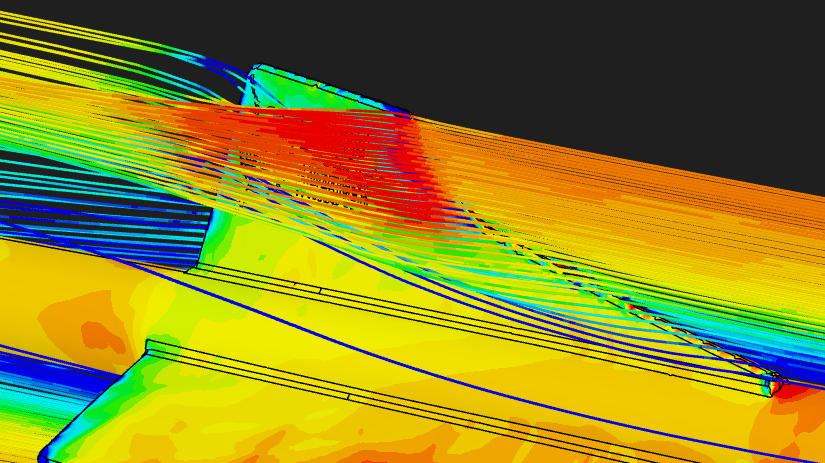The Sabre Series vanes are different
The Sabre Series of vanes are different... no doubt. Designed from the ground up using CFD (Computational Fluid Dynamics), NASA stability calculations, a custom made wind tunnel, and a LabRadar (Doppler radar). Form follows function.
How Sabres are different
-
Noise
Noise is a symptom of an inefficient vane. Loud vanes have a swirling "vortice" of air off the back the vane. A louder vane is going to have more drag and behave worse in the wind.
-
Drag
Imagine a parachute on the back of your arrows. The parachute pulls on the end of your arrow, resisting changes to the arrow's trajectory.
-
Height
A taller vane will have more stability than a shorter vane, all else equal. Typically though a taller vane is a louder vane having a hissing sound that is picked up by animals as well as humans.
What Actually Affects Stability in Flight?
The true measure of stability in flight is the difference between the center of gravity and the center of pressure.

Center of Gravity
The point where the arrow’s total weight is summed. In flight this is the point the arrow will rotate, as shown.
Center of Pressure
Point here all aerodynamic pressures (correction forces) are summed. Increasing the distance from the center of gravity to the center of pressure increases stability. This is critical when combined with a broadhead. Sabre Series vanes optimize the center of pressure by using the large area at the back and top of the vane.
Vane Offset
Angle the vane is to the axis of the shaft. It helps balance out imperfections in the arrow as well as inducing some required drag. Sabre Series vanes are optimized to use a 3 fletch configuration with 2.5 degrees of offset (or helical). Consider the DCA Custom Arrows Vane Angle Tool for precise placement.

Smooth Flight
Note the smooth straight flow lines coming off the top trailing edge. how there are no swirls coming off the rear of the vane. A larger swirl (known as a vortices) will result in a louder vane. Wing tip vortices also cause unwanted drag.

EFFICIENT AIR USE
Low pressure zones are optimized to only be on the front edge and slightly on the top to generate rotation using the double delta leading edges similar to how a F-18's main wings work.
